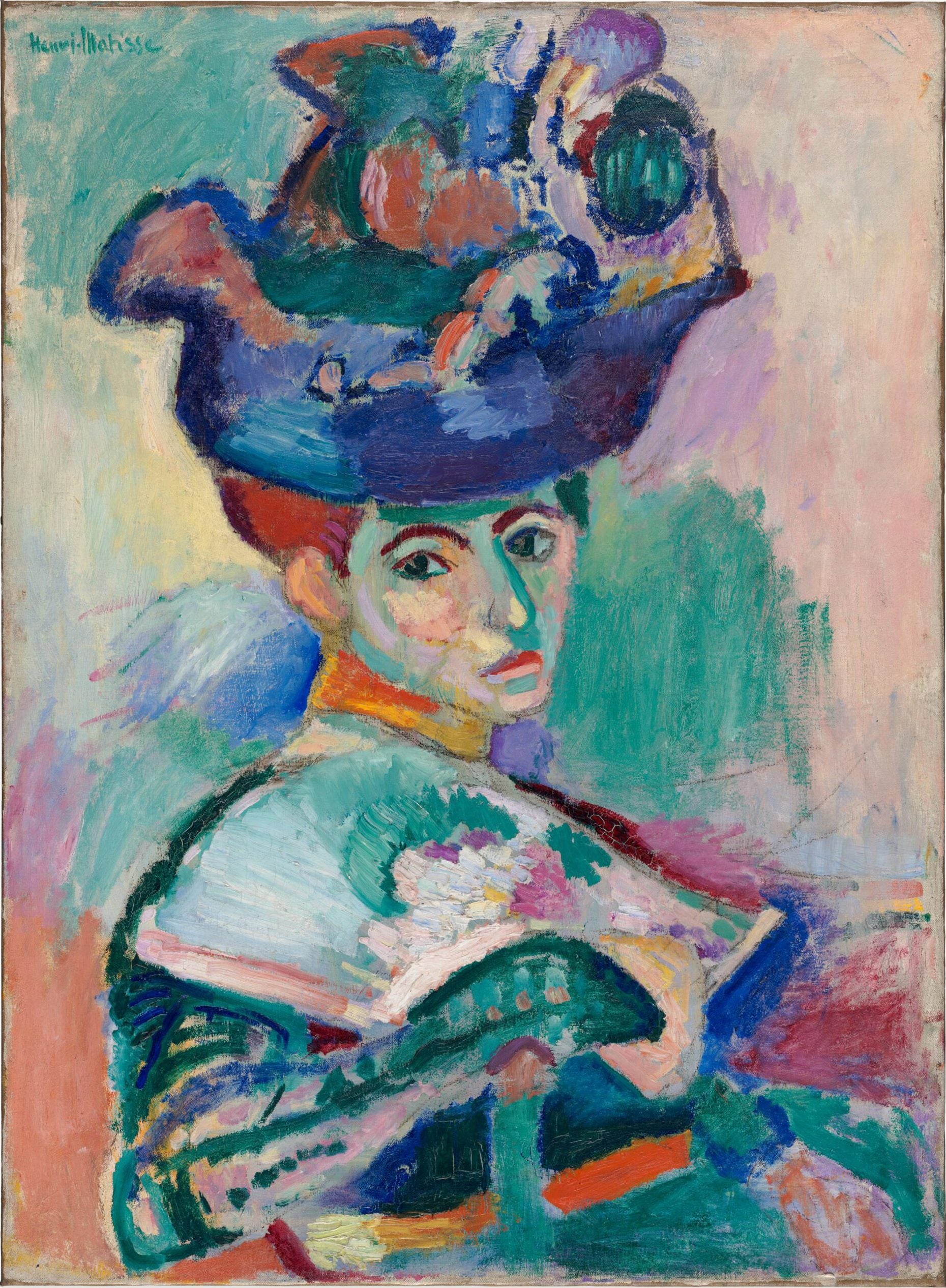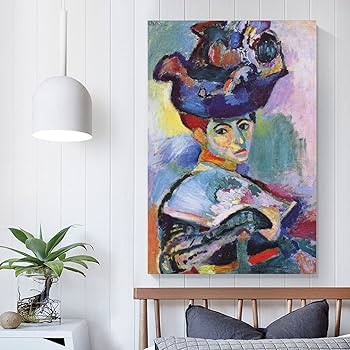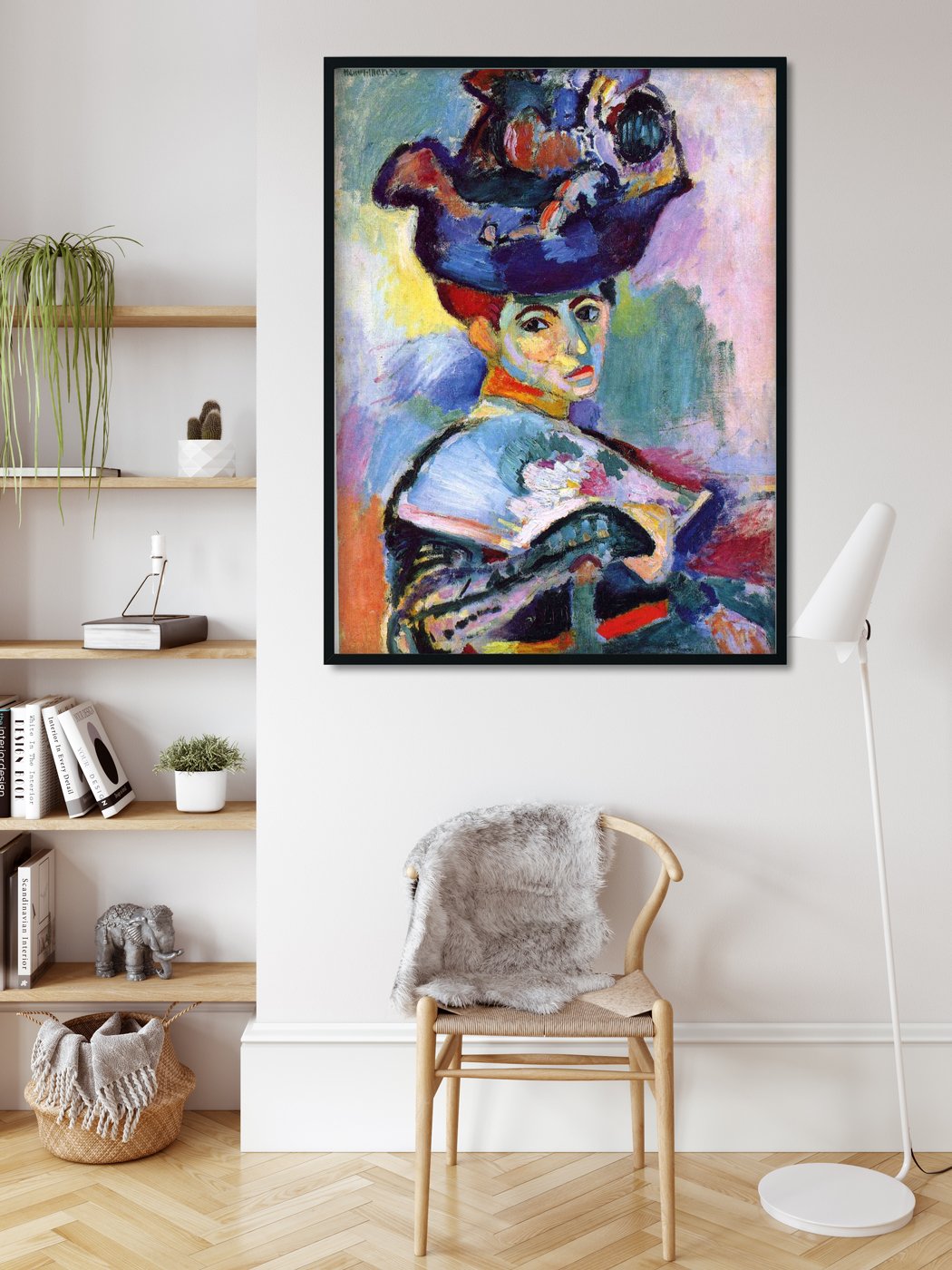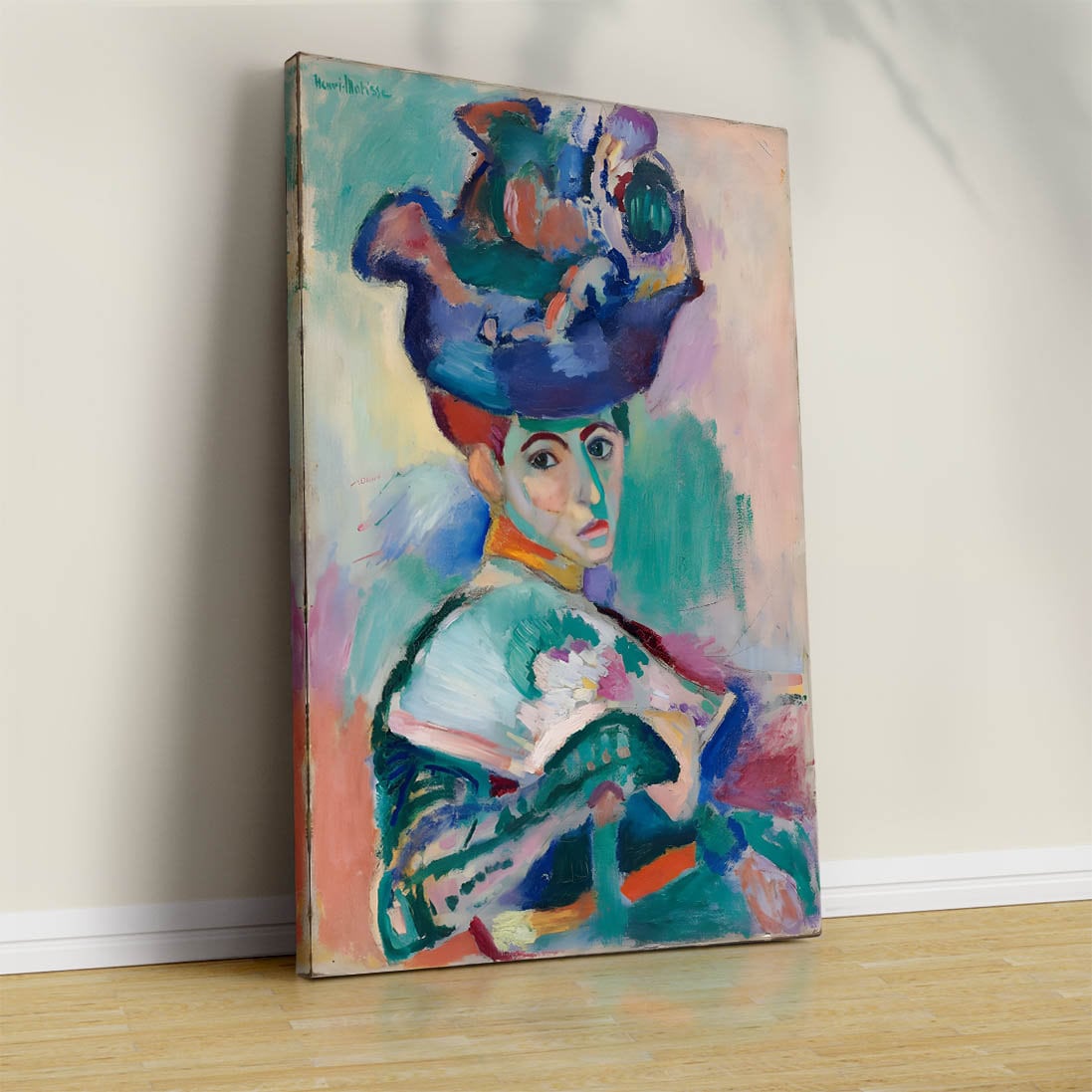Description
In 1905, Henri Matisse, master undisputed master of color and prominent figure of the Fauvist movement, presented "Woman with a Hat", a work that has become an emblem of the boldness and stylistic innovation of this period. The painting, measuring 45x60 cm, not only challenges the academic conventions of the time but also stands out for its evocative power and its ability to capture the essence and dynamism of the portrayed subject, Amélie Parayre, the artist's wife.
The composition of "Woman with a Hat" is a testament to Matisse's radical approach to color and form. The woman, situated at the center of the canvas, is depicted with a technique that advocates for the expressive rather than imitative use of color. The wide and extravagant hat that adorns the figure, as well as her dress, are bathed in a symphony of vibrant and contrasting tones: greens, blues, pinks, and oranges come together in harmony, defying conventional chromatic logic. This excessive use of color, far from being arbitrary, is a vehicle of emotional and psychological expression that underscores the personality and mood of the subject.
It is not only in color where Matisse demonstrates his genius. The woman's gaze, serene and distant, seems to sink into deep thoughts, while her posture, both upright and relaxed, suggests innate confidence. The loose strokes and quick brushstrokes may seem improvised, but every line and every splash of color is calculated to convey vital energy and inner complexity. Matisse manages, through these techniques, that the viewer not only sees but also feels the presence of the woman on the canvas.
"Woman with a Hat" is also of significant historical importance within the context of Fauvism. This movement, born at the beginning of the 20th century, broke with academic traditions and emphasized the artist's subjectivity. The work was presented at the Salon d'Automne in 1905 and elicited a polarizing reaction among critics and the public. Initial critiques were fierce, labeling Matisse's use of color as wild and primitive; however, this same "wildness" is what defines and gives name to Fauvism —"fauve" in French means "wild beast".
Comparing this work with others by the same artist, such as "The Green Stripe" (1905) or "Portrait of Madame Matisse" (1913), one can observe a constant in Matisse's evolution: the incessant exploration of the expressive possibilities of color and form. Through these works, Henri Matisse not only breaks the aesthetic barriers of his time but also redefines the portrait as a means of personal and emotional exploration.
In conclusion, "Woman with a Hat" by Henri Matisse is more than a painting, it is a visual manifesto that encapsulates the artist's revolutionary vision. The confrontation between color and form, the imposing presence of the subject, and the response provoked in the viewer make this work an essential piece for understanding not only Fauvism but also the evolution of modern art. Matisse, with his bold and colorful brushstroke, invites us to see beyond the obvious and to immerse ourselves in a world where color is emotion and form is expressive force.






